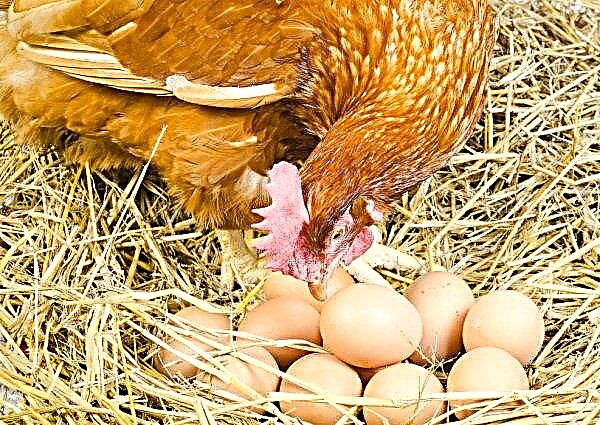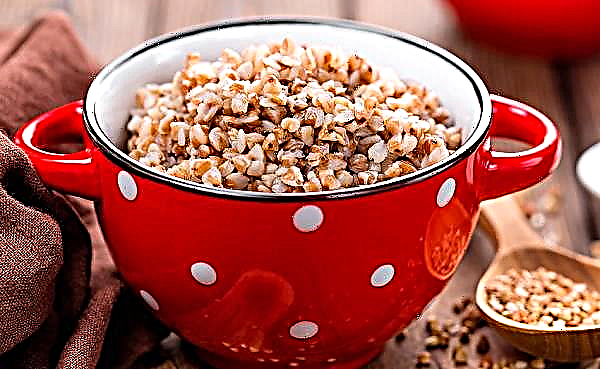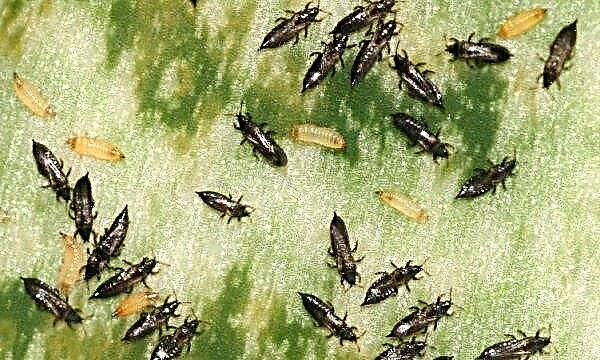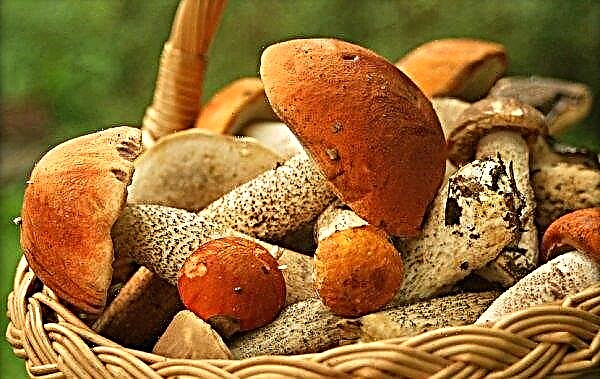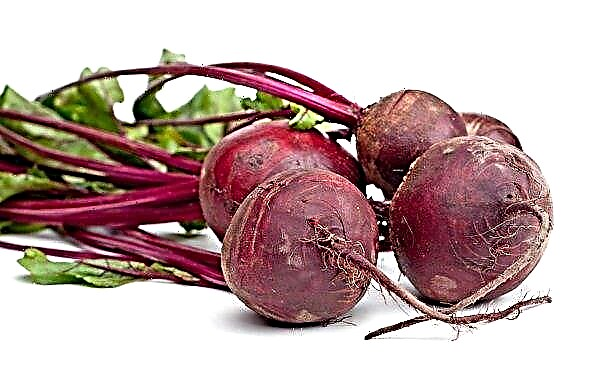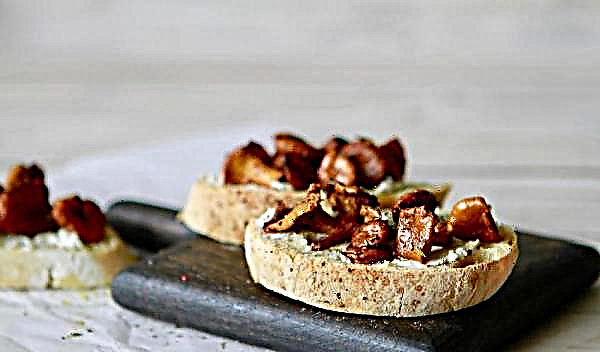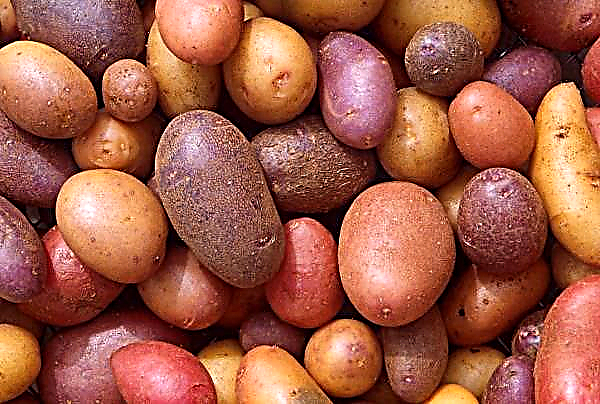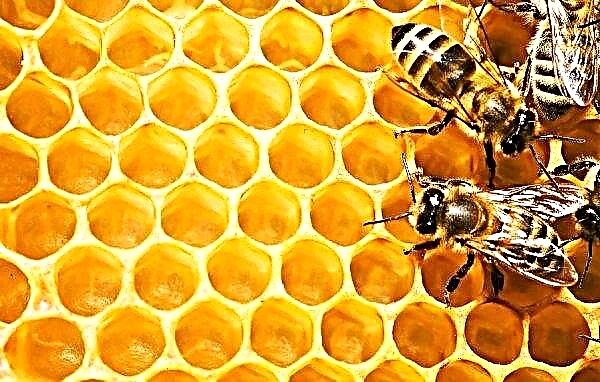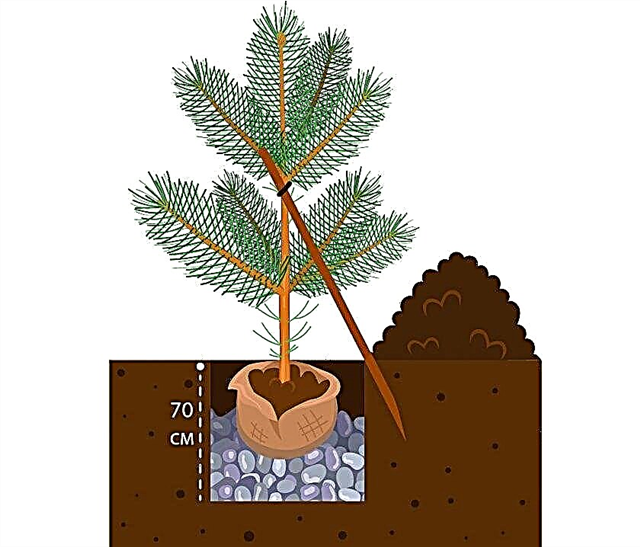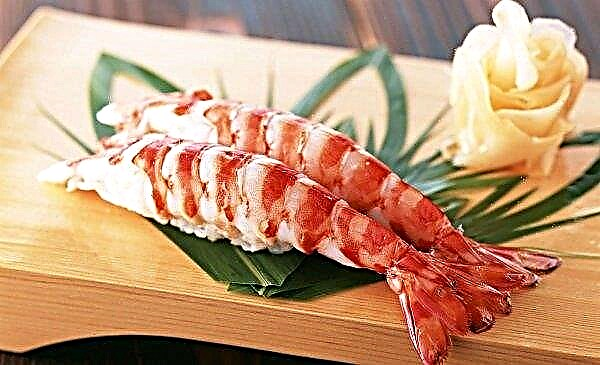Hoya is one of the most exotic plant species with beautiful and lush spherical inflorescences. But in order for wax ivy to regularly decorate the interior with its flowering, the plant needs to create suitable conditions. This article lists the basic rules for growing hoya in a home environment and the features of its flowering, as well as the reasons why wax ivy does not bloom for a long time, and ways to eliminate them.
Did you know? The strong aroma of fragrant hoya flowers can provoke an allergy in a person or cause a migraine attack.
Basic requirements for growing hoya
It is not difficult to grow hoya at home, but at the same time you need to create a suitable indoor microclimate for the plant and carry out proper flower care.
A list of basic rules for growing wax ivy is presented below:
- the pot with the plant should be placed in a well-lit place, but avoid prolonged exposure to the hoya in direct sunlight in the summer;
- the optimum air temperature in the warm season is +20 ... + 25 ° C, and in winter about + 15 ° C;
- Watering the plant in spring and summer should be plentiful as the top layer of the soil dries, but waterlogging of the soil should not be allowed. In winter, watering is reduced;
- the room with the hoya should be regularly ventilated, providing the flower with access to fresh air, but drafts should be avoided;
- the flower can be grown in a room with moderate air humidity, but in extreme heat it is recommended to spray the leaves of the hoya with water or briefly put it under a warm shower;
- in spring and summer, wax ivy needs to be fed with complex and organic fertilizers;
- after the end of the flowering period, the shoots of the plant can be trimmed a little to keep the flower attractive;
- every 4–5 years, wax ivy should be transplanted into a fresh substrate, which should be loose and nutritious;
- in the cold season, the plant needs to provide a period of rest so that the hoya can regain strength.
Did you know? One of the varieties of wax ivy with the largest flowers is the Imperial Khoya - the diameter of each flower can be about 8 cm.
Features of the flowering period
Typically, the hoya blooms in spring and summer, and in the autumn it slows down and falls into a state of hibernation. But under favorable conditions, the plant may bloom repeatedly in the fall.
The main features of flowering wax ivy are:
- Inflorescences have the shape of a spherical umbrella and contain about 20 flowers. The color of the inflorescences depends on the plant variety and can be white, pink or yellow.
- The flowers of wax ivy are bisexual and resemble an asterisk of 5 petals, located on an elongated reddish peduncle.
- In the center of each flower is a five-pointed crown, which rises slightly above the petals. Its color depends on the variety of hoya.
- The sizes of the flowers depend on the varieties of wax ivy and usually do not exceed 2 cm in diameter. Each flower keeps on an inflorescence for about 2-3 weeks, and then falls off.
- Hoya flowers exude a strong odor. Drops of thick translucent nectar, which attracts insects, form on their crown.
Important! Fertilizing fertilizers is not worth it - this will lead to an excessive build-up of green mass at the expense of inflorescences, and can also trigger the appearance of fungal diseases.
Why doesn’t the hoya blossom and what should be done at home
At home, the hoya usually begins to bloom at the age of 2-3 years, but there are times when this does not happen. Even in adult wax ivy, which previously pleased with regular and abundant flowering, interruptions in the formation of inflorescences can occur. The reasons for this phenomenon may be different, but in any case, the long absence of flowering indicates the presence of errors in the care of the hoya. The rest of the article lists the main reasons why wax ivy does not bloom.
No transfers
Wax ivy belongs to those plants that do not need frequent transplants, but this does not mean that the hoya does not need this procedure at all. Over time, the soil is depleted and the plant needs a fresh substrate. Sometimes flowering may not be due to the long stay of the flower in the same soil or pot.
Hoya transplant recommendations are listed below:
- The plant needs to be replanted in the spring.
- Young hoya needs to be transplanted every 1-2 years, and for adult plants this procedure is carried out every 4-5 years.
- After a transplant of wax ivy, a break in flowering lasting 1-2 years can be observed.
- The soil for the flower should consist of leaf and clay-soddy earth with the addition of humus, all components must be taken in equal proportions.
- A good drainage layer must be made in the tank to prevent stagnation of water.
- You need to remove the flower from the old flowerpot together with an earthen lump formed around the roots. Then the wax ivy is placed in a new container and fill the empty space with soil.
- So that the hoya quickly adapts to a new place, after transplanting it is abundantly watered with water.
Widko: Hoya transplant
Lack of fertilizer
Even when planting in soil containing a maximum of nutrients, wax ivy requires fertilizer top dressing. They need to be carried out correctly, since an excessive amount of fertilizer will not benefit the plant, and a lack of nutrients will delay flowering.
Wax ivy should be fed with fertilizers according to the following rules:
- Fertilizing is required in spring and summer, when the plant enters the phase of active growth.
- The frequency of fertilizer application is 1 time in 14 days.
- As a top dressing, you can use standard fertilizer for cacti and succulents, applying it according to the instructions on the package.
- In autumn and winter, fertilizing is not necessary, since wax ivy goes into a state of rest.
- For a more magnificent flowering, you can one-time feed with a mullein solution.
Incorrect conditions
Very often, the hoya does not bloom for a long time due to errors in the conditions of detention. They may be due to inappropriate indoor climate conditions or improper plant care.
- These errors include:
- The lack of sunlight - if the pot is 1-2 meters from the window or in the far corner of the room, then the plant does not have enough light. A flower needs sun all day, but from too bright direct sunlight the hoyu needs to be shaded - they can cause leaf burns.
- Improper watering - the hoya should not be too flooded with water, as this leads to rotting of the roots. Significant drying of an earthen coma leads to the fact that the leaves of the plant wither and flower stalks are not formed.
- Dense soil in a pot with a flower - prevents free access of water and air to the roots of the plant.
- Low air temperature in the room in winter - in this case, wax ivy not only demonstrates a delay in flowering, but can also drop leaves at temperatures below + 10 ° C.
- The heat and low humidity in the room in the summer - in extreme heat, even the leaves of the plant can wither without regular spraying, and the formation of inflorescences in the hoya does not remain strong at all.
- The presence of cold drafts negatively affects the condition of the plant and can even lead to dropping leaves.
Large pot size
In order for the hoya to please with regular flowering, she needs a suitable pot in size. It should not be too deep, and its size depends on the age of the flower.
The basic requirements for the pot are listed below:
- The roots of the flower should completely fill the entire pot, leaving no free space in it.
- After another transplant into a larger container, it is recommended to leave the plant in a pot of this size for 4–7 years.
- Small adult hoya is transplanted into a flowerpot with a diameter of not more than 15 cm.
- For the flower, you need to use only a new pot with drainage holes at the bottom - the hoya should not be transplanted into flowerpots left after other indoor flowers.
- Large wax ivy can be grown in a pot with a diameter of about 20 cm.
Important! If the plant is transplanted into too large a container, then flowering may not take several years.
Bulb too deep
The root system of the flower should not be too deep underground, so when planting a plant, moderately deep pots are used, and the bulb is immersed in the soil so that only a thin layer of earth is on top of it.
This arrangement will stimulate the flowering of wax ivy for several reasons:
- improved air access to the roots;
- water will quickly reach the bulb, but will not stagnate around it;
- the soil and roots warm better in the sun and get enough light.

Lack of rest period
From the beginning of September to the end of February, hoya can slow down growth and fall into a state of rest. Such a rest is necessary for the plant in order to gain strength before the next phase of active growth and flowering. But sometimes wax ivy can skip the rest period and bloom again in the fall. After such repeated flowering, the hoya is significantly depleted and does not have time to regain strength until spring, as a result of which the next flowering may not occur.
Did you know? In the East, wax ivy is put in the bedroom of the spouses, considering the plant a good way to improve the sexual life of partners.
For regular flowering, it is recommended to provide the flower with the necessary conditions for relaxing in the cold season:
- reduce the room temperature to +11 ... + 14 ° С - plant growth will slow down, and it will have time to gain strength for magnificent spring flowering;
- minimize watering - during the dormant period, it is recommended to water the flower with a small amount of water, after the earthen lump in the pot dries well;
- stop fertilizing, so that they do not stimulate the plant to continuous growth.

Diseases or pests
Sometimes the hoya does not bloom because it has been attacked by infections or pests. In this case, you need to correctly identify the problem and immediately begin to treat the flower.
Important! Many of these diseases can occur when weakening wax ivy as a result of damage by insect pests.
A list of the main diseases and pests of wax ivy is listed below:
- Spider mite. The insect not only feeds on the sap of the plants, but also covers the lower surface of the leaf with a thin white web. On the sheet itself, small through points of a dark color are noticeable, and subsequently the entire green mass of the hoya begins to turn yellow and fall. Pests are removed manually by wiping the leaves with a cotton swab dipped in soapy water. With a large number of ticks, the flower is treated with insecticides.
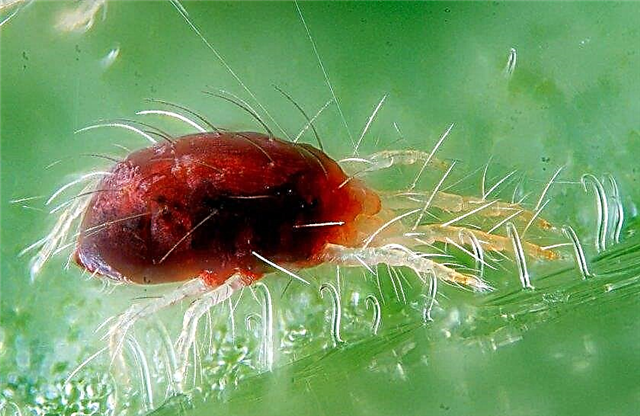
- Aphid. It is not difficult to notice the appearance of this pest on the plant - small green insects and larvae are visible on the leaves of the hoya, which eat the leaves and leave behind a sticky coating (pad). To eliminate aphids, the leaves are wiped with an alcohol solution, and then treated with an insecticide.
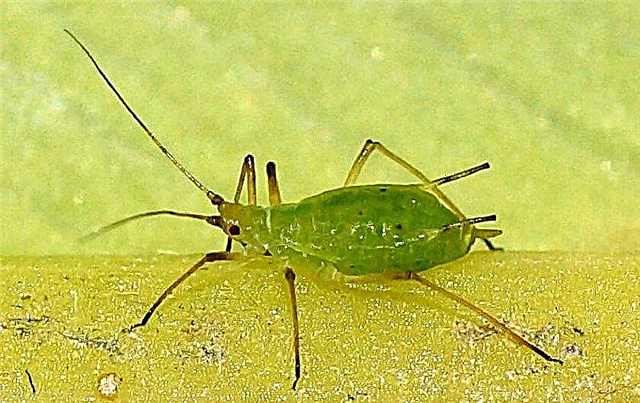
- Root nematode. This pest acts underground and feeds on the root system of the flower. Nematode is a small filamentous worms living in the upper soil layer. If a pest is found, the affected areas of the roots are removed, and the plant is transplanted into fresh soil, after calcining it in the oven for disinfection.
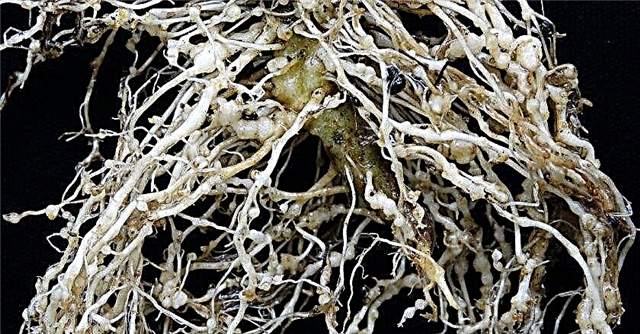
- Shield. These insects are very small in size and painted black. They stick around the stems and leaves of the flower, suck out the juice from it and lead to withering of the plant. When a scab appears, the leaves of wax ivy are wiped with a cotton swab dipped in an alcohol solution. If there are too many insects, insecticides are used.
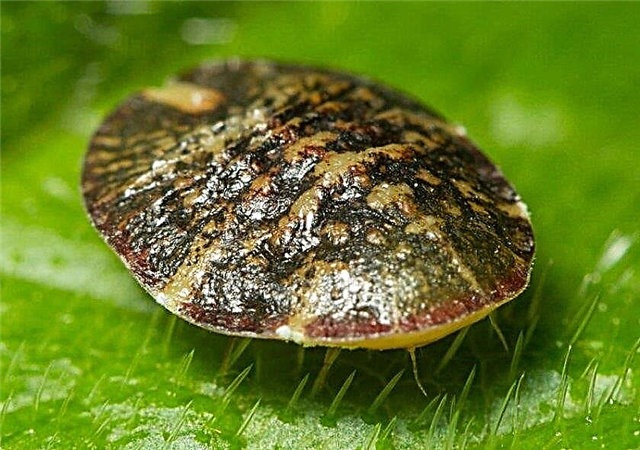
- Rot (black, gray, root). This problem appears with excessive watering, and its signs are gray and brown spots on the leaves and inflorescences of ivy. With a significant lesion, it is impossible to save the plant. At the initial stage of the disease, the hoyu needs to be removed from the soil, the rotten areas removed and the flower treated with Bordeaux liquid, and then transplanted into a new substrate.
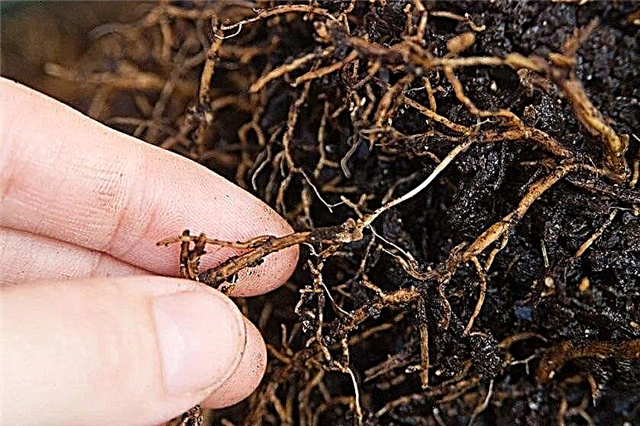
- Spotting. The disease has a fungal nature, and its main symptom is small brown spots with uneven edges and a yellow border. With the further spread of infection, the area of these spots increases, the leaf turns yellow and falls off. To treat the disease, you need to remove the affected areas of the leaves and treat the flower with fungicides.

- Powdery Mildew It occurs when the soil is waterlogged in conditions of low air temperature. White plaque appears on the leaves and buds of the flower, the plant begins to wither and dies. For treatment, hoya is treated with a solution of soap and copper sulfate, and then adjustments are made to the microclimate.
How to prevent care mistakes
It is much easier to prevent the occurrence of errors when growing wax ivy than to deal with their consequences.
To make the hoya bloom regularly, you must follow these recommendations:
- create comfortable microclimate conditions in the room;
- put the pot with the plant in a permanent place and do not move it during flowering, so as not to cause the inflorescences to fall;
- you cannot tie the shoots of hoya to the supports or bend them as you wish - the flower should grow in a way that suits it;
- dried flower stalks after flowering is recommended to be left on the plant, since next year flowers will appear on them again;
- in order to cause lush flowering, in early spring you can make wax ivy a warm bath by immersing the pot in a basin with warm water (+35 ... + 40 ° C) for 1.5 hours. The same procedure can be carried out for the ground part of the hoya, lowering its shoots in warm water for 20-30 minutes;
- during the dormant period, it is recommended to thoroughly dry the soil in a pot with a plant - after this, spring flowering will be especially lush.
When grown indoors, hoya can be a moody plant that instantly responds to changes in external conditions by a delay in flowering. But if you strictly follow all the above recommendations and create suitable microclimate conditions, then blooming wax ivy will become a wonderful decoration of any interior.







